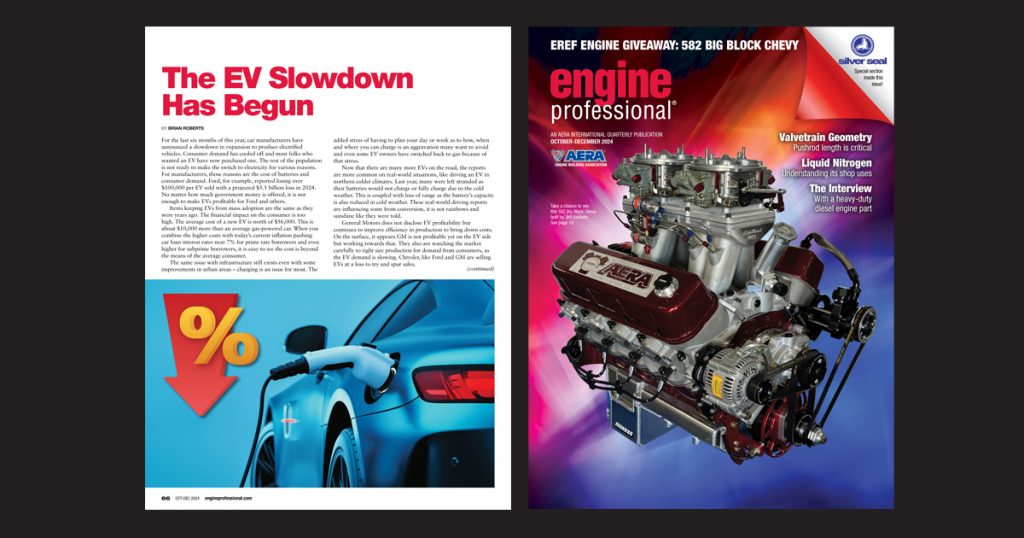By Brian Roberts
For the last six months of this year, car manufacturers have announced a slowdown in expansion to produce electrified vehicles. Consumer demand has cooled off and most folks who wanted an EV have now purchased one. The rest of the population is not ready to make the switch to electricity for various reasons. For manufacturers, those reasons are the cost of batteries and consumer demand. Ford, for example, reported losing over $100,000 per EV sold with a projected $5.5 billion loss in 2024. No matter how much government money is offered, it is not enough to make EVs profitable for Ford and others.
Items keeping EVs from mass adoption are the same as they were years ago. The financial impact on the consumer is too high. The average cost of a new EV is north of $56,000. This is about $10,000 more than an average gas-powered car. When you combine the higher costs with today’s current inflation pushing car loan interest rates near 7% for prime rate borrowers and even higher for subprime borrowers, it is easy to see the cost is beyond the means of the average consumer.
The same issue with infrastructure still exists even with some improvements in urban areas – charging is an issue for most. The added stress of having to plan your day or week as to how, when and where you can charge is an aggravation many want to avoid and even some EV owners have switched back to gas because of that stress.
Read this article with all images in the digital issue of Engine Professional magazine https://engineprofessional.com/2024EPQ4/#p=68
Now that there are many more EVs on the road, the reports are more common on real-world situations, like driving an EV in northern colder climates. Last year, many were left stranded as their batteries would not charge or fully charge due to the cold weather. This is coupled with loss of range as the battery’s capacity is also reduced in cold weather. These real-world driving reports are influencing some from conversion, it is not rainbows and sunshine like they were told.
General Motors does not disclose EV profitability but continues to improve efficiency in production to bring down costs. On the surface, it appears GM is not profitable yet on the EV side but working towards that. They also are watching the market carefully to right size production for demand from consumers, as the EV demand is slowing. Chrysler, like Ford and GM are selling EVs at a loss to try and spur sales.
Toyota is not convinced total EV is the best strategy today. They are focusing on proven and reliable hybrid technology. The use of the internal combustion engine combined with battery storage gives the best approach to improved fuel economy, emission reduction and consumer adoption.
Then there is Tesla, who saw a 53% profit growth in 2021. Since then, there has been a decline in profits of 15% year-over-year. This can be due to increased costs everyone is dealing with under the current inflation, high interest rates on borrowing, and softening demand. Telsa, however, is still the leader in the EV sector.
The EV will no doubt be pushed by governments through subsidies and other financial incentives to drive people to buy them. Thus far, that has only helped those who already wanted one but has done little to convert others still skeptical of the long-term costs of battery replacement, charging limitations, rising electrical rates, electric grid capacity, future taxes to repair roads damaged by these heavier vehicles since they do not pay road taxes built into gas and diesel fuel costs.
For the internal combustion engine, this slowing of adoption is a positive for our industry. If more manufacturers align with Toyota’s road map of hybrids, the internal combustion engine in passenger cars will live on well into the future, only in smaller displacements with turbos. Seems the demand for these hybrid vehicles is strong as more consumers migrate to them to save on inflationary fuel costs while enjoying excellent range and freedom to fill up as needed at existing gas stations.
Read this article with all images in the digital issue of Engine Professional magazine https://engineprofessional.com/2024EPQ4/#p=68

